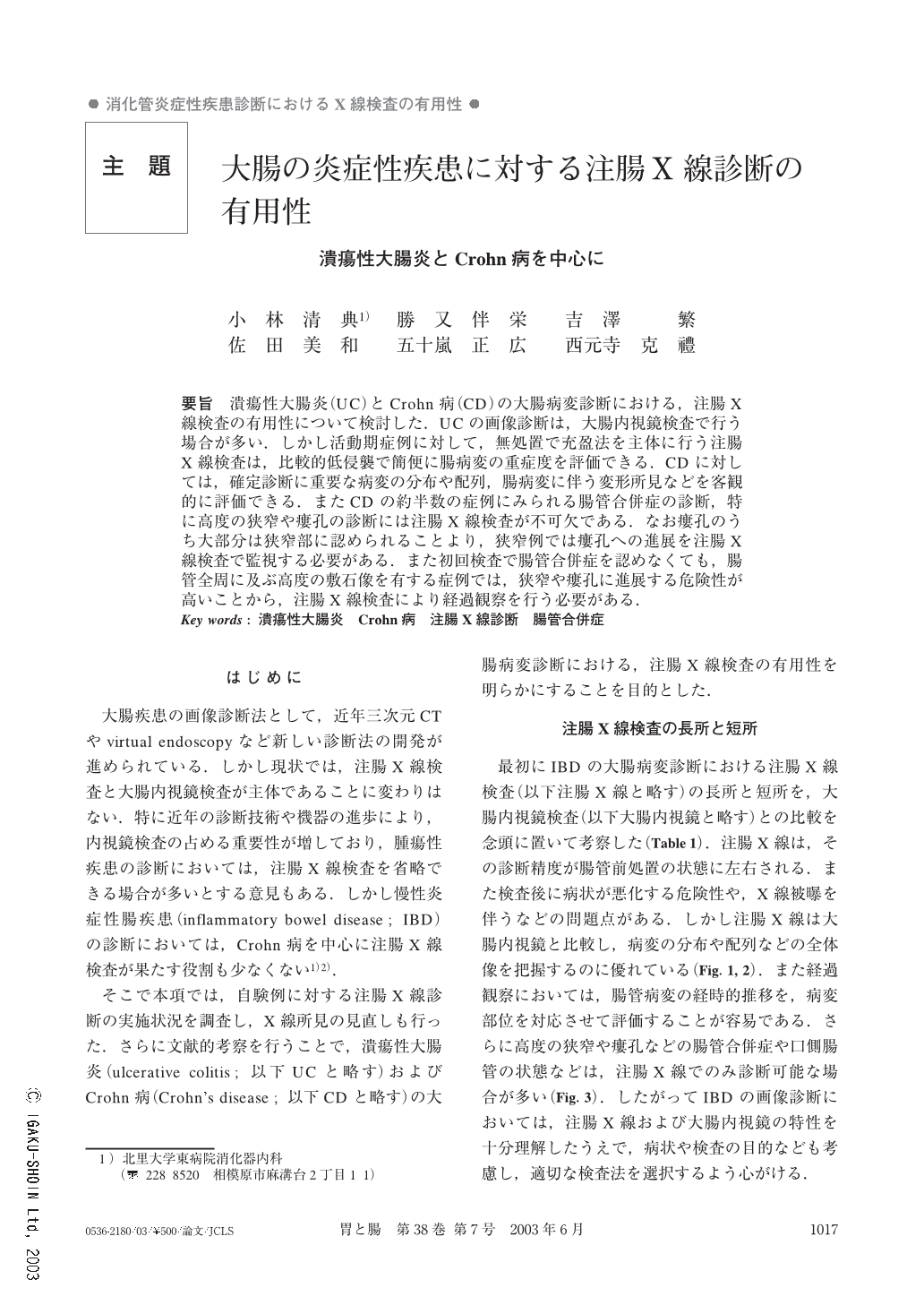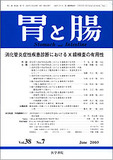Japanese
English
- 有料閲覧
- Abstract 文献概要
- 1ページ目 Look Inside
- 参考文献 Reference
- サイト内被引用 Cited by
要旨 潰瘍性大腸炎(UC)とCrohn病(CD)の大腸病変診断における,注腸X線検査の有用性について検討した.UCの画像診断は,大腸内視鏡検査で行う場合が多い.しかし活動期症例に対して,無処置で充盈法を主体に行う注腸X線検査は,比較的低侵襲で簡便に腸病変の重症度を評価できる.CDに対しては,確定診断に重要な病変の分布や配列,腸病変に伴う変形所見などを客観的に評価できる.またCDの約半数の症例にみられる腸管合併症の診断,特に高度の狭窄や瘻孔の診断には注腸X線検査が不可欠である.なお瘻孔のうち大部分は狭窄部に認められることより,狭窄例では瘻孔への進展を注腸X線検査で監視する必要がある.また初回検査で腸管合併症を認めなくても,腸管全周に及ぶ高度の敷石像を有する症例では,狭窄や瘻孔に進展する危険性が高いことから,注腸X線検査により経過観察を行う必要がある.
We investigated the clinical usefulness and role of radiographic examination of the large intestine for diagnosing inflammatory bowel disease, especially focusing on ulcerative colitis (UC) and Crohn's disease (CD).
In the case of UC, the main morphological diagnosis is carried out only by colonoscopy, but radiographic examination of the large intestine is useful for evaluating the morphological severity of UC. Both of these methods produce data that can be well correlated in clinical investigation, especially for patients in whom it is difficult to perform total colonoscopy.
In the case of CD, radiographic examination of the large intestine is superior to colonscopy for providing the whole image of the lesion with its arrangement and distribution. Moreover, it is applicable for diagnosis of cases with severe colonic stenosis and fistula. In addition, morphological observation by radiographic examination reveals many cases in which circumferential cobblestone appearance has developed into intestinal stenosis and fistula. For these reasons, it is necessary to perform follow-up observation using radiographic examination of the large intestine for such cases, even if intestinal complication is not able to be found by initial radiographic examination.
The conclusion is that, it is important to understand the respective roles of radiography and colonoscopy for the diagnosis and the follow-up study of inflammatory bowel disease.

Copyright © 2003, Igaku-Shoin Ltd. All rights reserved.


